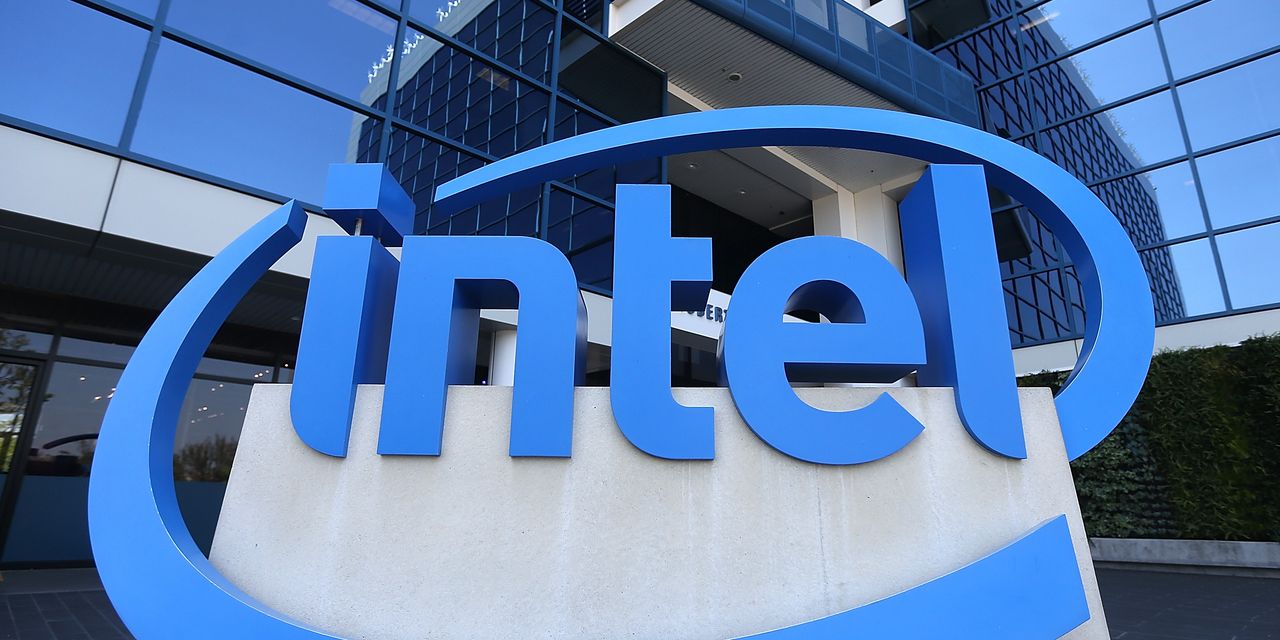Intel Corp.’s stock jumped 5.7% before the opening bell on Friday, lifted by the chip maker’s third-quarter earnings beat, slightly better-than-expected PC chip sales and a major cost-cutting plan.
The stock’s performance is set to snap a nine-quarter streak of post-earnings declines.
Intel’s
INTC,
results come amid plunging demand for PCs and a challenging macro environment. Against this backdrop, Intel’s stock has fallen 49% this year, outpacing the S&P 500 Index’s
SPX,
decline of 20.1%.
On Thursday, Intel trimmed its full-year outlook, projecting earnings of about $1.95 a share and revenue of $63 billion to $64 billion, citing “continued macroeconomic headwinds.” Wall Street had estimated earnings of $2.20 a share and revenue of $65.3 billion.
See now: Intel stock rises on earnings beat, plans for layoffs, billions in cost cuts planned
Analysts are voicing their concern about the company’s path forward. “Despite a ‘kitchen sink’ guide, we can’t recommend INTC until we see a succeeding path to product and process leadership,” wrote Truist Securities analyst William Stein in a note released on Friday. Truist lowered its Intel price target to $29 from $40.
On Thursday after market close, Intel announced plans to drive $3 billion in cost reductions in 2023. This figure will grow to $8 billion to $10 billion in annualized cost reductions and efficiency gains by the end of 2025, according to the chip maker. “Despite the worsening economic conditions, we delivered solid results and made significant progress with our product and process execution during the quarter,” Intel CEO Pat Gelsinger said in the earnings release. The company is “aggressively addressing costs and driving efficiencies across the business,” he added.
On a conference call with analysts, Gelsinger also discussed “efforts to optimize our headcount.”
Intel also launched the next stage of its IDM 2.0 strategy. Unveiled in March 2021, Integrated Device Manufacturing 2.0 aims to overhaul the company’s design and manufacturing processes, with an “internal foundry model” at the center of the effort. “As we usher in the next phase of IDM 2.0, we are focused on embracing an internal foundry model to allow our manufacturing group and business units to be more agile, make better decisions and establish a leadership cost structure,” said Intel CFO David Zinsner in the earnings release.
Now read: Intel stock set to snap nine-quarter streak of post-earnings declines
“This decouples design and manufacturing, enabling better transparency and structural efficiencies,” wrote Oppenheimer analyst Rick Schafer in a note released on Thursday. “INTC’s design teams become customers of the fab, on equal footing w/external customers.”
“Management appears to be taking a more pragmatic view around operations and investment,” said Wedbush analyst Matt Bryson in a note released on Friday, pointing to Intel’s cost-reduction plan and the separation of foundry operations from product businesses to boost efficiency. Intel also lowered its 2022 capital-expenditure spending forecast by $2 billion.
However, there are plenty of challenges ahead for the company. “While we believe a more cautious approach to expenditures (while still investing in future transitions) is the right approach, we still worry INTC’s setting its forward assumptions up to be overly optimistic,” wrote Bryson. The analyst pointed to Intel’s outlook for the PC Total Addressable Market to be between 270 million and 290 million in 2023. This, he said, seems ambitious in light of macro headwinds, highlighting share shift toward Apple Inc.’s
AAPL,
M Series processors and solid competition from Advanced Micro Devices Inc
AMD,
“With numerous headwinds likely to impact 2023 results and operational improvement still a future aspiration, we remain negative on INTC,” he added. Wedbush has an underperform rating on Intel.
Oppenheimer has a perform rating on Intel. “We remain on the sidelines as INTC’s extensive turnaround efforts prove out,” wrote Schafer. “Company remains in prove-it mode as mgmt pushes capacity expansion and return to process leadership.”
See now: Mobileye prices IPO above targeted range to raise nearly $1 billion, and most of it will go to Intel
Of 37 analysts surveyed by FactSet, seven have an overweight or buy rating, 21 have a hold rating and eight have an underweight or sell rating.
